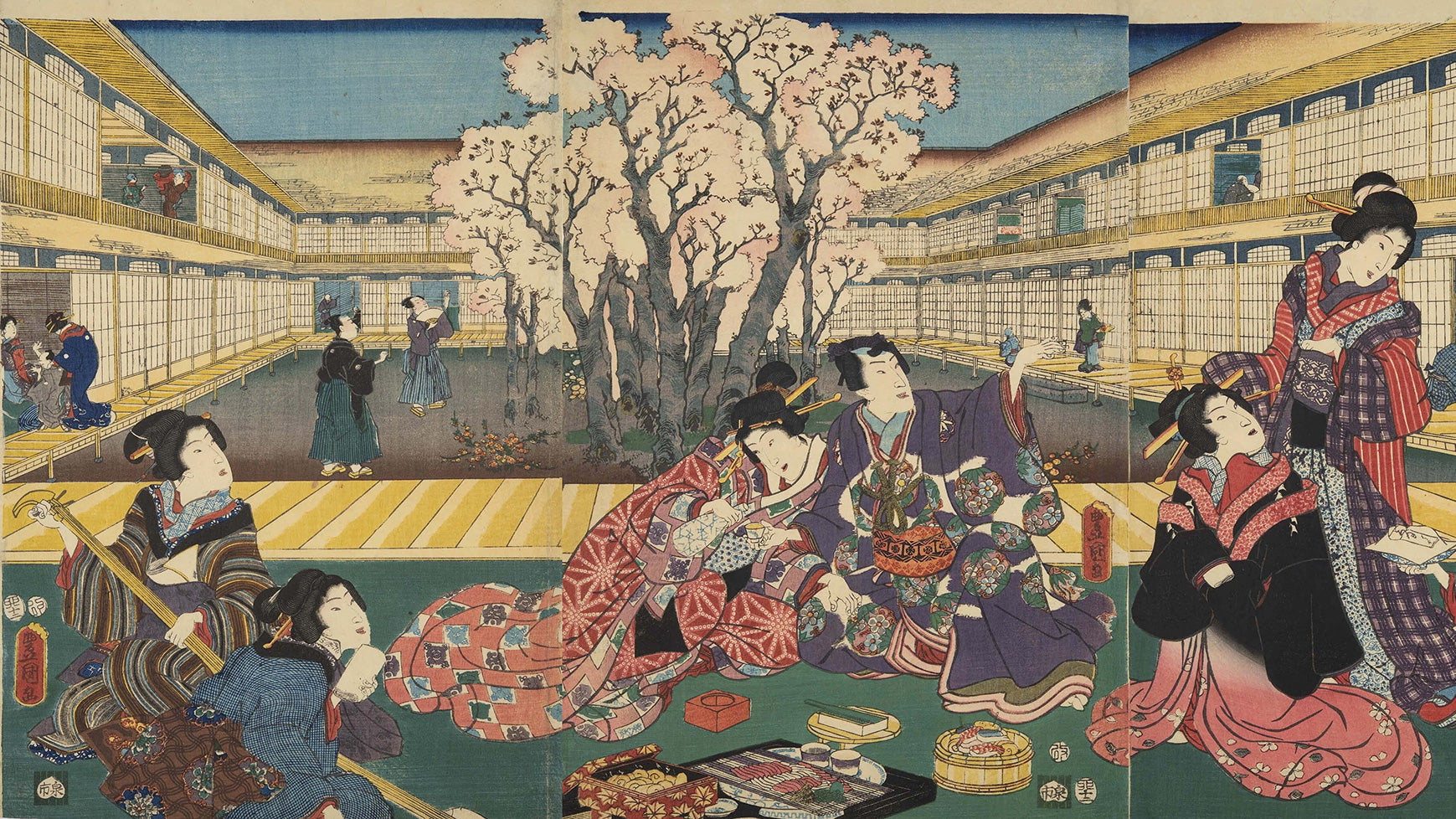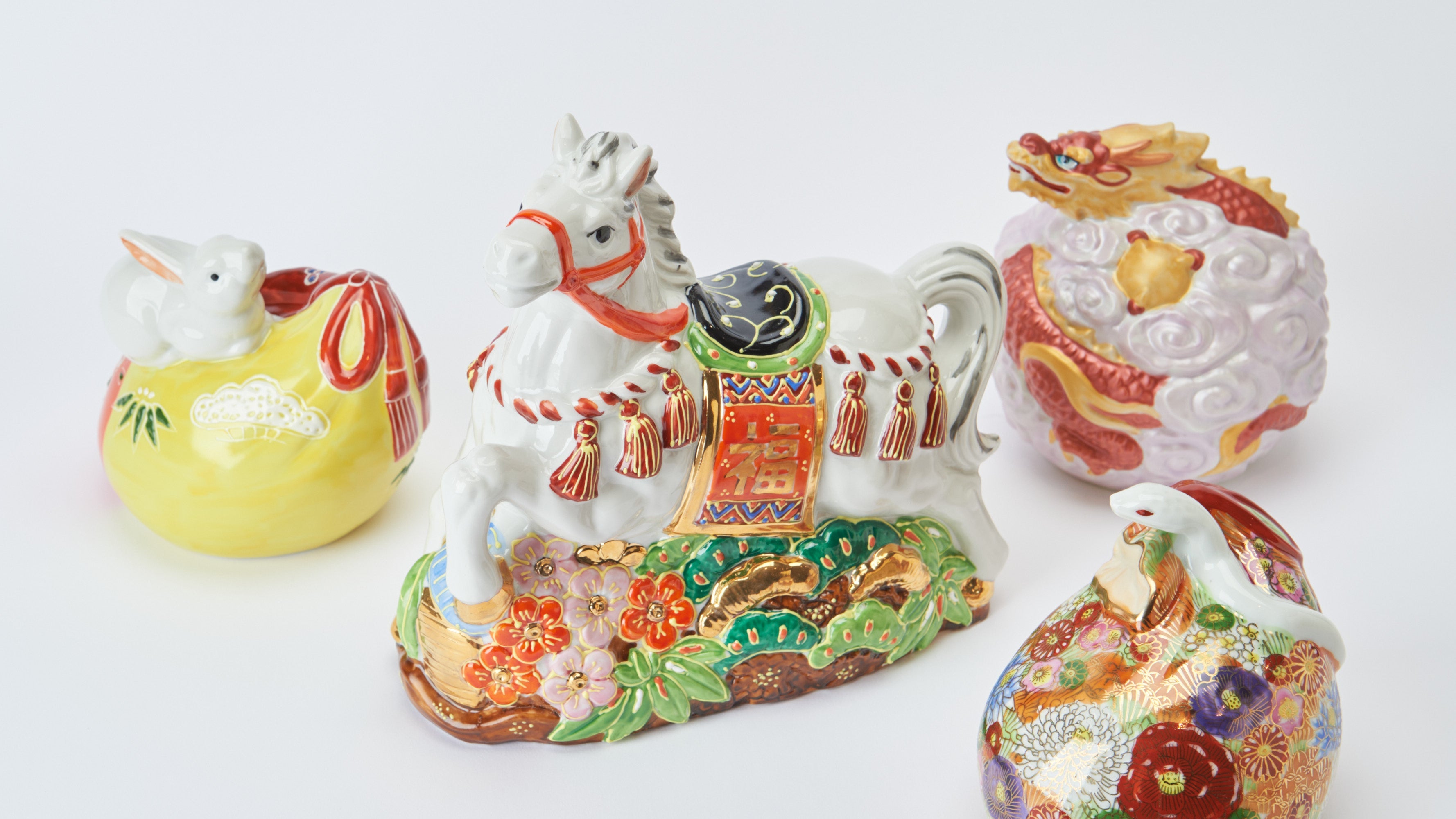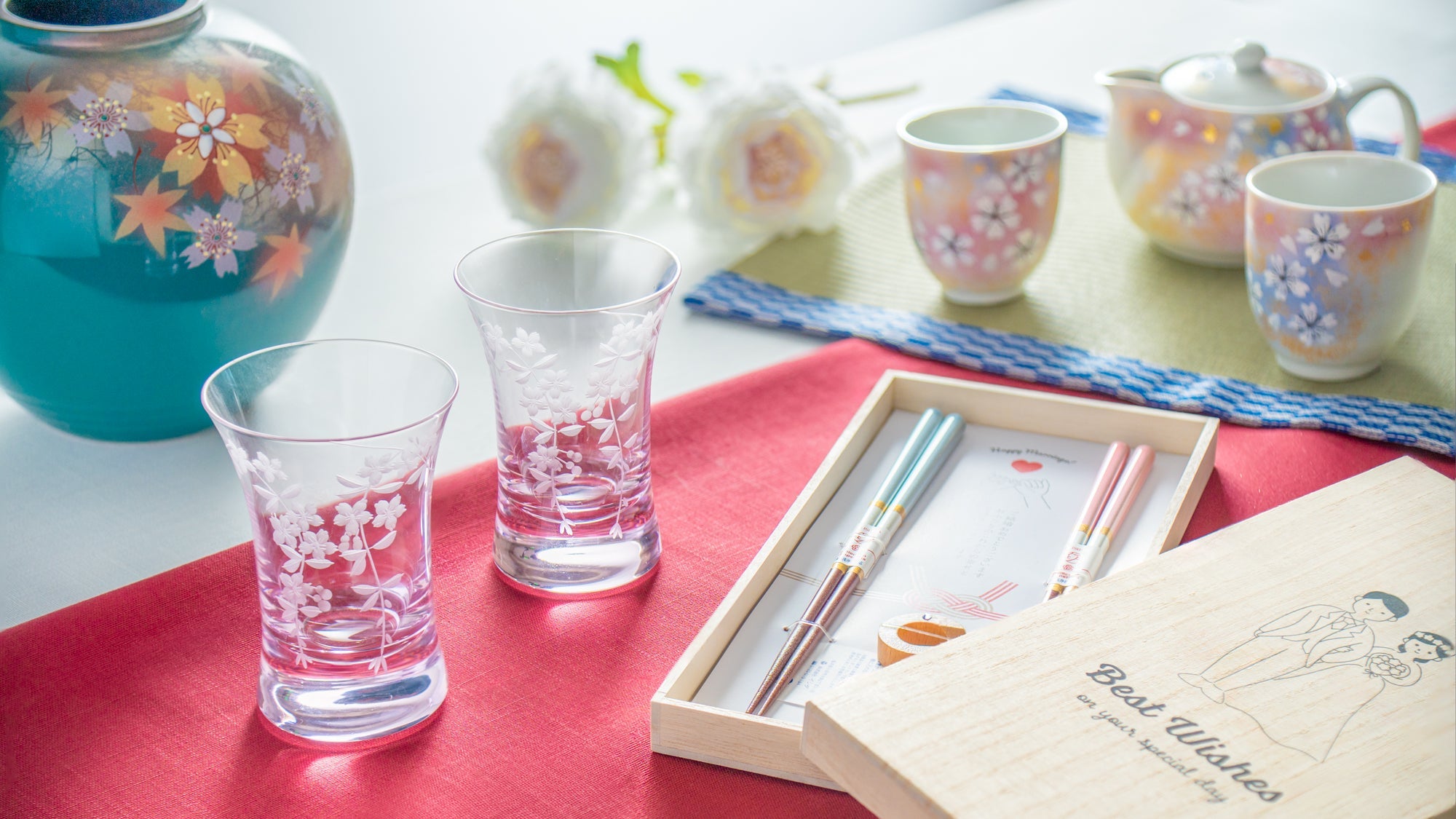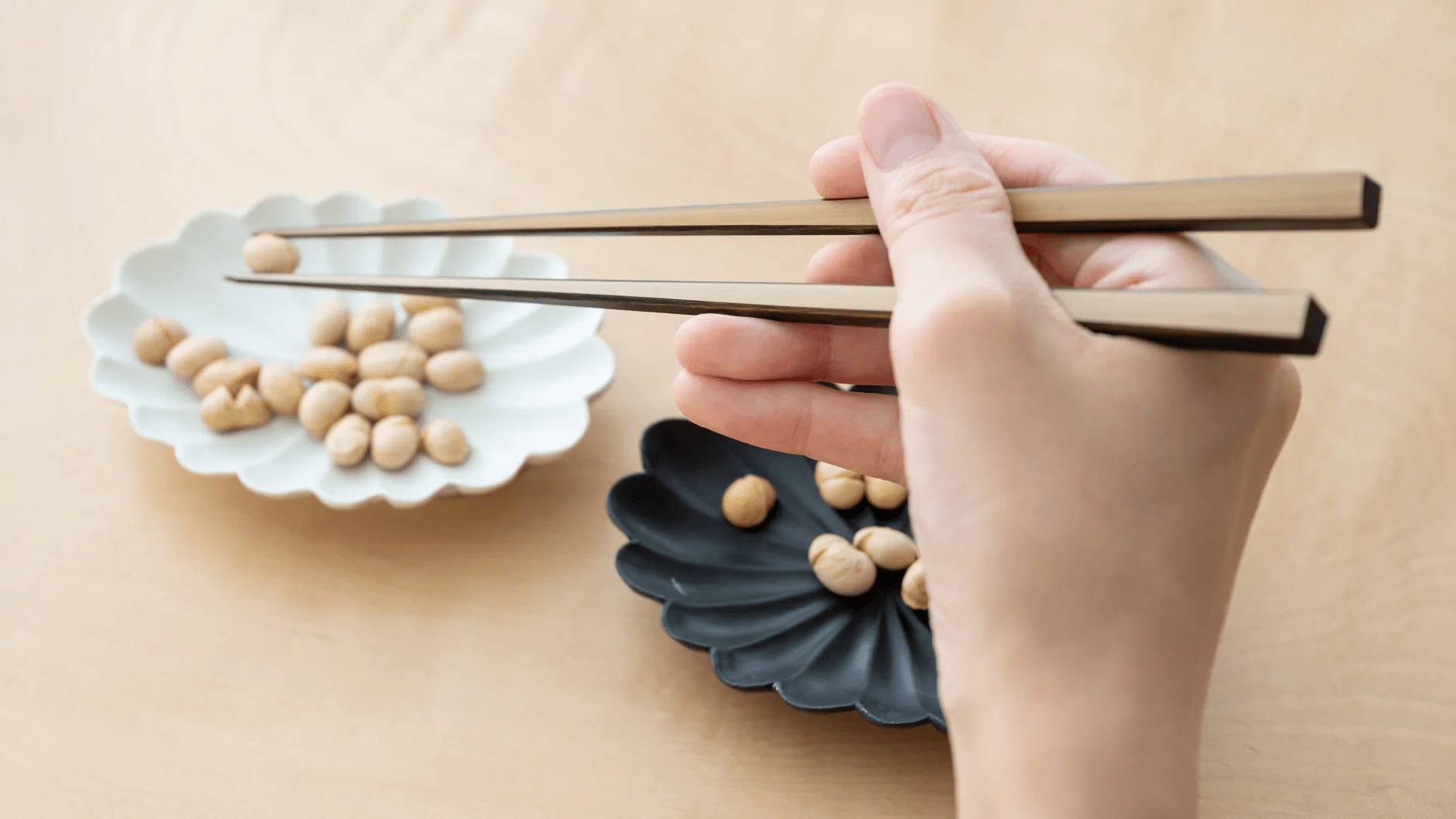
A Bite of the Past: Taste the Richness of Japan's Edo Era
Written by Team MUSUBI
The Edo period (1603–1868 CE), a pivotal era in Japan's history, wasn't just about samurai, ornate castles, and vibrant arts. It was a time when the food culture of the country began to take distinct shape, evolving into what we recognize today as quintessentially Japanese cuisine. For any lover of Japanese food, diving into the Edo period is like opening a treasure trove of flavors, stories, and traditions.
The Edo Gourmet Dish exhibition, presented by the Ota Memorial Museum of Art, features ninety stunning ukiyo-e prints by celebrated Edo-period masters such as Katsushika Hokusai, Utagawa Hiroshige, and Utagawa Kuniyoshi. These artworks vividly depict the everyday lives of common people, a diverse array of culinary delights and ingredients, and intimate dining scenes, offering a window into the flourishing and rich gastronomic culture of Edo Japan. Join Team Musubi as we explore the enchanting allure of Edo’s culinary heritage.
tables of contents
The Rise of Edo and Commoner Cuisine
The Edo period marked a turning point in Japanese history when Tokugawa Ieyasu founded his shogunate in Edo, now known as Tokyo. What began as a humble fishing village quickly blossomed into a vibrant metropolis, attracting people from all corners of Japan. With this influx of cultures and traditions, Edo became a culinary crossroads, giving birth to what we now know as edomae—Edo-style cuisine.
Unlike the refined, artfully crafted dishes favored by the aristocracy in Kyoto, Edo’s food scene was all about hearty, satisfying meals for the city’s hardworking commoners. Think fresh, bold flavors and practical dishes designed to fuel the bustling lives of merchants, artisans, and laborers. Edomae wasn’t just about food—it was a reflection of the city’s energy, innovation, and the spirit of its people.
From sushi crafted with fish freshly caught in Edo Bay to steaming bowls of soba noodles, the cuisine of Edo was as dynamic as the city itself. It’s no wonder that many of these dishes remain iconic staples of Japanese food culture today.
Taste of Edo: Sushi, Soba, and Tempura
Sushi
While sushi today is a globally celebrated delicacy, its origins are surprisingly modest. Edomae sushi, the precursor to modern sushi, began as a humble fast-food dish in Edo. Using fish freshly caught from Tokyo Bay—referred to as Edomae—it was often marinated in soy sauce or vinegar to enhance its flavor and preserve it—a practical solution in a time before refrigeration. This was then paired with vinegared rice, creating a simple yet satisfying meal.
At the Ota Memorial Museum of Art, Utagawa Kuniyoshi’s captivating piece, Woman as Benkei: Ataka no Matsu, vividly captures the presence of sushi in the daily lives of people during its time. The artwork features a woman adorned in exquisite and elegant attire, gracefully holding a stunning blue and white plate crafted using the sometsuke technique. On this beautiful plate rests nigirizushi, a style that remains beloved worldwide today.
Beside her, a baby eagerly spreads its hands, reaching for the sushi topped with succulent shrimp and accompanied by a golden rolled omelet. Nigiri first emerged in the late Edo period, and the intricate wooden box in the woman’s hand highlights the craftsmanship that elevated sushi’s presentation to new heights of sophistication. This artwork underscores sushi’s cultural significance and refinement as it became an integral part of Japanese culinary tradition.


Sushi gradually began to make its presence felt in a variety of settings. For instance, in an illustration from Ehon Edo Suzume—the first topographical guide of Edo featuring artwork by ukiyo-e founder Hishikawa Moronobu—we see Matsuga Zushi, renowned as one of the finest sushi establishments of its time, bustling with a continuous flow of patrons. This vivid depiction highlights how sushi had already become a staple in daily life, seamlessly integrating into the fabric of society.

By the time of the artwork Mitate Genji Hana no En, sushi had permeated even more aspects of Japanese culture. Here, we observe people savoring sushi while enjoying the beauty of cherry blossoms. This scene beautifully illustrates how sushi was not only a favorite culinary delight in restaurants but also a cherished treat during serene and festive moments like hanami “cherry blossom viewing.”
Soba
During the Edo period, soba—thin, delicate buckwheat noodles—emerged as a culinary staple across Japan. Buckwheat, being easier to cultivate than rice and packed with essential nutrients, quickly became a dietary cornerstone. As Edo grew into a thriving metropolis, soba stands and restaurants sprouted up on nearly every corner, offering a quick, affordable, and nourishing meal. From samurai to laborers, soba was a dish that transcended social boundaries, uniting people from all walks of life around its simple yet satisfying flavors.

From the exhibited works, we can see many paintings dedicated to soba. In one piece, a weary traveler places his bundle by his side as he savors a delicious bowl of soba on his journey—raising his chopsticks high to dip his noodles into a traditional soba choko cup. Another artwork depicts Daruma Daishi, surrounded by a small mound of steamed soba, accompanied by yakumi—aromatic vegetables or spices used as condiments to enhance the flavor of the dish. Yet another piece showcases a rare depiction of the interior of a yatai “food stall” selling soba as part of a kabuki stage scene. Despite its modest size, the yatai is equipped with a variety of cooking tools for preparing soba dishes, and the exquisitely crafted sometsuke bowl is particularly eye-catching.


Tempura
Tempura, delightful golden-battered seafood and vegetables, owes its existence to international influences. In the 16th century, Portuguese traders and missionaries introduced the concept of deep-frying ingredients in batter to Japan. This innovative cooking technique quickly captured the attention of Japanese chefs, who began experimenting to tailor it to local tastes.
By the Edo period, this cooking method had been meticulously adapted and refined, giving birth to tempura as we know it today. Japanese culinary artisans perfected the batter, ensuring it was light and crispy while maintaining the natural flavors of the ingredients. This seamless blend of Portuguese technique and Japanese precision resulted in a beloved dish that became a staple in Japanese cuisine.
In Tsukioka Yoshitoshi’s work, Thirty-two Aspects of Woman: Delicious-Habits of a Kaei-era Prostitute, a woman with exquisitely refined makeup and hair is depicted enjoying tempura under the moonlight. Notably, instead of using chopsticks, she employs a skewer to savor the golden, crispy tempura, while a choko cup is placed beside her to hold the dipping sauce. This carefully rendered dining method and the choice of elegant tableware offer us a fascinating glimpse into the culinary practices of that bygone era.

Relishing Edo Cuisine in Diverse Settings
When exploring the culinary world of Edo-period Japan, one is immediately struck by the diversity of dining experiences that cater to every stratum of society. From the lively street food stalls to the refined elegance of high-end restaurants and the serene charm of riverside dining, Edo cuisine was as much about the setting as it was about the food itself. Let’s take a closer look at three dining experiences that defined this vibrant era: yatai “street food stalls,” ryotei “high-end restaurants,” and kawadoko “riverside dining.”
Yatai
In the bustling streets of Edo, yatai were the beating heart of the city’s food culture. These mobile food stalls offered quick, affordable, and flavorful meals to the masses. Picture the lively scenes: merchants, travelers, and locals gathered around small stalls, savoring skewers of grilled chicken yakitori, steaming bowls of soba noodles, or crispy tempura.
Yatai were more than just places to eat—they were social hubs where people from all walks of life could connect over shared meals. Today, the legacy of yatai lives on in modern food markets and festivals, where the spirit of Edo’s street food culture continues to thrive.

It appears that even back then, yatai came in various forms. In the painting Famous Places in Edo: Waiting for the Moon on the Twenty-sixth at Takanawa, we catch a glimpse of a unique Edo-period tradition. At that time, people would gather together, eagerly awaiting the moonrise—a cultural practice during that time. As they waited, friends and neighbors would share the moment in front of the yatai, enjoying a delightful array of foods and the warm company of one another.

Another artwork portrays a different scene: people engaged in the gathering of shellfish. During the Edo period, the optimal season for clam harvesting was the third month of the lunar calendar, when the tides—especially the spring tides with their dramatic high and low differences—created perfect conditions. Early in the morning, boats would set out to sea, and by midday, as the tide receded, people would disembark to collect clams and fish from the exposed tide pools. Even boats moored along the shore were transformed into yatai, serving up fresh and delicious treats to those on land.
Ryotei
For those seeking a more refined dining experience, ryotei was the pinnacle of Edo-period gastronomy. These exclusive, high-end restaurants catered to the elite, including samurai, wealthy merchants, and influential figures. Dining at a ryotei was an immersive experience, where meticulously prepared kaiseki meals—featuring seasonal ingredients and artistic presentation—were served in private, tranquil settings.
The ambiance of a ryotei was designed to evoke a sense of harmony and sophistication, making it the perfect place for both culinary indulgence and intimate conversations.

Consider Yaozen, a leading ryotei renowned for its kappo cuisine. As one of the most high-end restaurants of the period, it offered guests not only exquisite meals but also breathtaking views of Mount Fuji, all within interiors adorned with elegant decor. In another artwork, the upscale ryotei named Aoyagi is depicted as offering take-out service. Here, meals are carefully packaged in donabe pots with excellent heat retention and a secure lid, ensuring that the food remains both warm and delicious. Kabuki performers took these culinary delights with them, boarding boats for a fireworks festival celebration.

Kawadoko
During the hot summer months, kawadoko offered a refreshing escape from the heat. These elevated dining platforms were built over rivers, allowing guests to enjoy their meals while listening to the soothing sounds of flowing water. Also popular in Kyoto, kawadoko combined the pleasures of fine dining with the beauty of nature.

Dishes were often light and seasonal, featuring chilled noodles, fresh sashimi, and delicate desserts. The cool breeze and serene atmosphere made kawadoko dining a beloved summer tradition, one that continues to enchant visitors to this day.
As depicted in the painting, guests dressed in airy, lightweight kimonos have moved their dining experience to the cool, refreshing waterside. Here, the ambiance is enriched by the beautiful scene of nature, adding a serene backdrop to their exquisite meal. This idyllic setting not only elevates the dining experience but also reflects the elegant fusion of culinary artistry with the serene beauty of nature.
The Culinary Legacy of the Edo Period
As Japan transitioned from the Edo period into the Meiji Restoration, the country’s emergence from isolation and the wave of Western influence brought dramatic shifts to its culinary landscape. Dining habits, ingredients, and even the way meals were prepared underwent a transformation. Yet, it was during the Edo period that the roots of modern Japanese cuisine—think kaiseki and kappo dining—were firmly planted.
This was an era of culinary creativity, innovation, and refinement. Edo cuisine, with its focus on simplicity, seasonality, and the freshest ingredients, laid the groundwork for what we now recognize as the essence of Japanese gastronomy. These principles didn’t just shape food; they shaped a culture.
Fast forward to today, and Tokyo stands as a global food capital, home to Michelin-starred restaurants and cutting-edge eateries. Yet, echoes of Edo are everywhere. The lively Toyosu Market, the humble soba noodle shops, and the quaint wagashi “traditional sweets” stores all serve as living reminders of a time when Edo was defining its culinary identity.
For anyone fascinated by Japanese cuisine, delving into the Edo period offers a deeper understanding of its rich legacy. Every piece of sushi, every bowl of soba, and every bite of tempura carries with it centuries of history, tradition, and the story of a city and its people.
Ōta Memorial Museum of Art
1-10-10 Jingu-mae Shibuyaku Tokyo








4 comments
@Lorna Woodrow – We truly appreciate your comment. Knowing you’re learning and enjoying these explorations truly makes my day.
Team Musubi
@Paul Nathanson – Thank you so much for your kind comment. We’re so glad to hear you enjoyed the article!
Team Musubi
Thank you for this beautifully illustrated and written article. I learn so much from your website and enjoy the virtual visits to the garden, museums, hotels and other locations.
Lorna Woodrow
Beautiful!
Paul Nathanson
Leave a comment
This site is protected by hCaptcha and the hCaptcha Privacy Policy and Terms of Service apply.